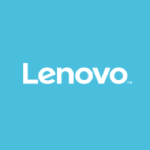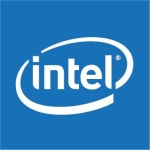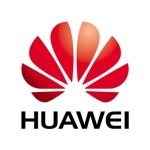What is our primary use case?
The use cases can vary significantly from one customer to another. Additionally, a single customer may have different sets of requirements for different applications. Consequently, one server can serve multiple applications. Our approach is to design and provide the customer with a solution tailored to their specific needs. We offer a range of servers, from entry-level to mid-range to high-end, depending on the customer's requirements.
We are running virtualized workloads, and some of our workloads are running on SAP HANA. We have other workloads running core ERP systems for other corporates. It varies, and some people use the servers for different applications such as data archiving, virtualization, and more. Dell PowerEdge R-Series is a very good fit there.
How has it helped my organization?
Dell PowerEdge R-Series is very flexible. We can customize the server entirely to meet the customer's specific needs. This includes tailoring options such as the processor, memory, storage, and networking configurations. Additionally, we offer various types of drives, whether SSDs or traditional hard disks, and we have options for large form factor or small form factor drives, as well as different chassis types. Overall, PowerEdge offers significant flexibility in these areas.
For workload management, we can customize the PowerEdge servers to include GPUs that are specifically designed to handle your AI workloads. When equipped with the right resources, our edge solutions can comfortably manage these demands. The new generation of PowerEdge servers is not only efficient but also performs exceptionally well.
What is most valuable?
The newer models have incorporated enhanced security features. They have added more robust security measures to the servers themselves. Additionally, Dell excels in the management aspect, which is very beneficial for users.
Dell PowerEdge R-Series industry standard servers have robust options and offer intense security and management features including NVMe support, streamlined remote management, RAID support, and flexible customization from processor to network options. They are robust, tested, and offer scalability options from entry-level to high-end servers.
What needs improvement?
For the most part, there’s no need for improvement in areas like manageability and security; they’ve covered those quite well. The storage controllers are also very well designed, and the support for NVMe is excellent. Regarding customization, the chassis can be tailored to meet specific user needs. They have addressed many aspects thoroughly. For instance, remote management is well taken care of; I even have an app on my phone that allows me to check the health status of the hardware. Overall, we can monitor and manage servers remotely without any issues. I would say that while Dell keeps up with industry innovations, they’ve addressed nearly all areas effectively.
Dell could improve its coverage a bit. Sometimes, there are firmware updates that need to be addressed. When we log into the iDRAC interface on the server for management, we currently have to manually upload the images for the new firmware upgrade. While the upgrade process itself is straightforward, many customers are often unaware that a firmware upgrade is even necessary. If this process could be automated so that the server can check for available firmware updates on its own, it would be really helpful. The server could send out an alert email indicating that a new firmware upgrade is available, allowing the administrator to decide when to perform the upgrade.
Buyer's Guide
Dell PowerEdge R-Series
October 2025
Learn what your peers think about Dell PowerEdge R-Series. Get advice and tips from experienced pros sharing their opinions. Updated: October 2025.
869,760 professionals have used our research since 2012.
For how long have I used the solution?
I have been using this solution for more than 20 years.
What do I think about the stability of the solution?
I would rate it an eight out of ten for stability.
When it comes to reducing unplanned downtime, it ultimately boils down to hardware. Dell PowerEdge servers are not fail-proof; from that perspective, hardware remains a potential point of failure. Any hardware can fail, and that’s a reality we have to acknowledge. There's no such thing as a completely fail-proof system. When addressing customer requirements, we design solutions tailored to their needs. If a customer wants to eliminate any single points of failure, our design must incorporate that by using multiple servers instead of relying on just one.
What do I think about the scalability of the solution?
The Dell PowerEdge R-Series is scalable depending on the model picked—whether entry-level, high-end, or with single to eight socket servers. The offering is tested and secure.
Dell's PowerEdge line has several models, but the one we mostly interact with is the R700 series. This includes models like the R750, R760, R770, and so on. When considering options, if we need to go for higher-end services, we can select models that allow for the addition of more GPUs. Ultimately, our choice depends on the customer's requirements. Some clients are looking for AI workhorses, so we tailor our selection to find the right model that fits their needs.
How are customer service and support?
It's really good. Especially once you subscribe to the pro support, their support is excellent. If they have parts available in the country, they have a very good response time as well. From a technical support perspective, we rarely need assistance, but when we do, it's pretty reliable.
How would you rate customer service and support?
How was the initial setup?
The deployment is very easy. The deployment is currently on-premises and not in the cloud.
What's my experience with pricing, setup cost, and licensing?
Dell PowerEdge R-Series is fairly priced compared to competitors
Which other solutions did I evaluate?
In my opinion, the biggest competitor is HPE, particularly the DL380. It's one of the best-selling options when it comes to HPE hardware, and I truly love that server. The DL380 from HPE is amazing. In terms of functionality and performance, I would give both HPE and Dell a thumbs up. However, when we compare them, I would argue that HPE is much better than Dell in terms of functionality. The DL380 from HPE is the best-seller, and it competes closely with Dell’s R760 or R770, depending on which generation we are looking at. The R700 series and the DL380 are very strong competitors.
I highly recommend both brands, and I enjoy working with their servers. They offer a lot of flexibility in various aspects, including CPU, memory, storage, and networking. This flexibility is a significant benefit of these servers. I'm not just limiting this to the DL380 or the R700 series; even the R600 series and any PowerEdge or ProLiant server from HPE provide excellent flexibility and reliability. From an uptime perspective, these servers are very robust. We can rely on them, and they truly serve as great workhorses.
What other advice do I have?
Energy consumption in servers is indeed an important factor to consider. However, it is primarily influenced by the processor. One of the key determining factors for energy consumption is the type of processor used in the server. When purchasing a server, the customer's specific requirements dictate which processor model is needed, as well as the specifications of that processor. Furthermore, when we conduct power supply sizing, it is crucial to calculate the appropriate power supply capacity required to support all the devices within the server. This ensures that the server operates efficiently and meets the customer's needs.
I would rate this solution a nine out of ten.
Which deployment model are you using for this solution?
On-premises
Disclosure: My company has a business relationship with this vendor other than being a customer. Reseller














